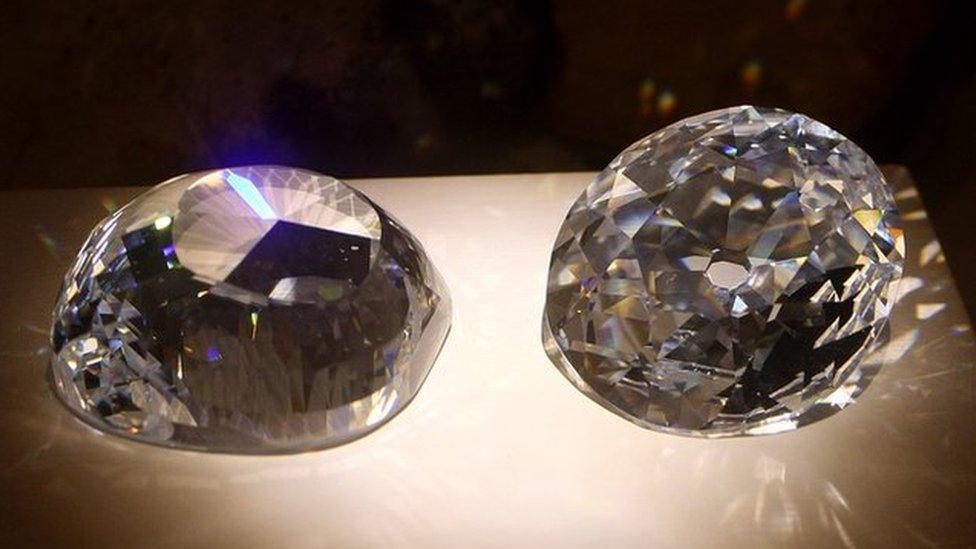Tower of London: Crown Jewels' origins explored in new exhibition
- Published
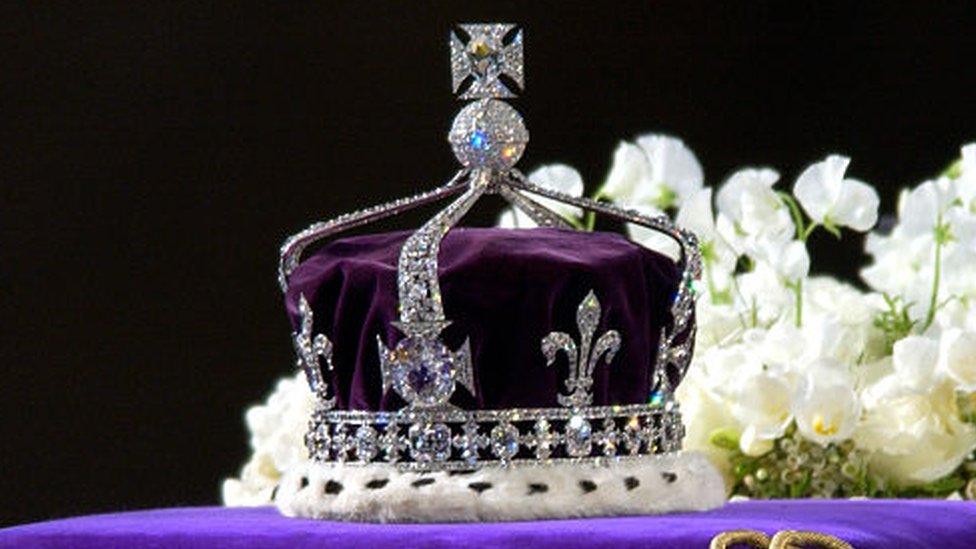
The Tower of London is opening the new exhibition after the coronation in May
The Tower of London will explore the history of the Crown Jewels in a new exhibition to mark the coronation year.
The Jewel House display will look at the origins of some of the precious objects for the first time, including the controversial Koh-i-noor diamond.
It is the first major change to the display for more than a decade.
Andrew Jackson, resident governor of the Tower of London said he hopes it will offer "a richer understanding of this magnificent collection".
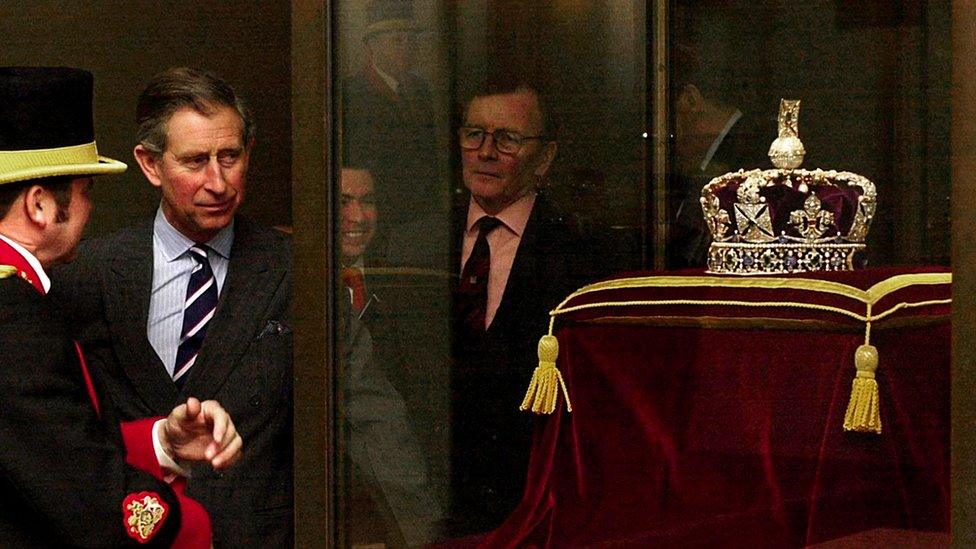
The then Prince of Wales looks at the Imperial State Crown during a visit to the Tower of London in 2003
The Koh-i-noor
The history of the Koh-i-noor will be explored, using a combination of objects and visual projections to explain the stone's story as a "symbol of conquest".
The diamond is set within the coronation crown of Queen Elizabeth, the Queen Mother, and was previously owned by Mughal Emperors, Shahs of Iran, Emirs of Afghanistan, and Sikh Maharajas.
It was seized by the East India Company after its victory in the Second Anglo-Sikh War of 1849 and given to Queen Victoria.
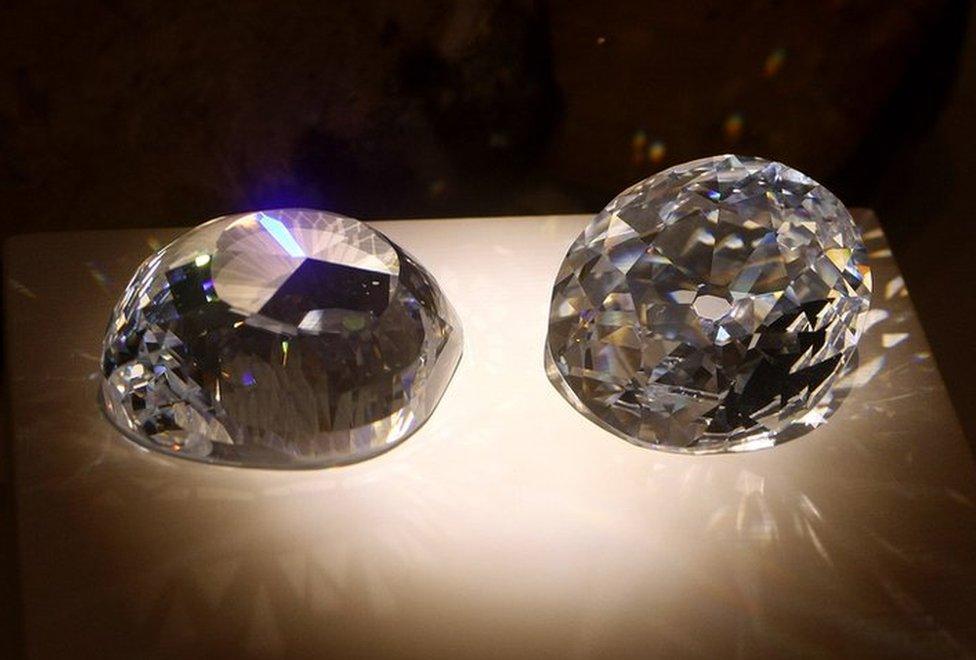
The history of the Koh-i-noor will be explored for the first time in the exhibition
The diamond has remained in the Crown Jewels ever since, but the governing party of India's prime minister has warned that it brings back painful memories of the British Empire.
The Queen Consort will not wear the gem at her coronation, and will instead be crowned with Queen Mary's Crown, which will be reset with diamonds from Elizabeth II's collection.
The display will also show how many of the most historic jewels have passed from crown to crown, including the Black Prince's Ruby.
It was one of the late Queen's favourite jewels and sits in the Imperial State Crown.
The Cullinan diamond, which was discovered in South Africa in 1905, will also feature. There are calls for it to be returned to its country of origin.
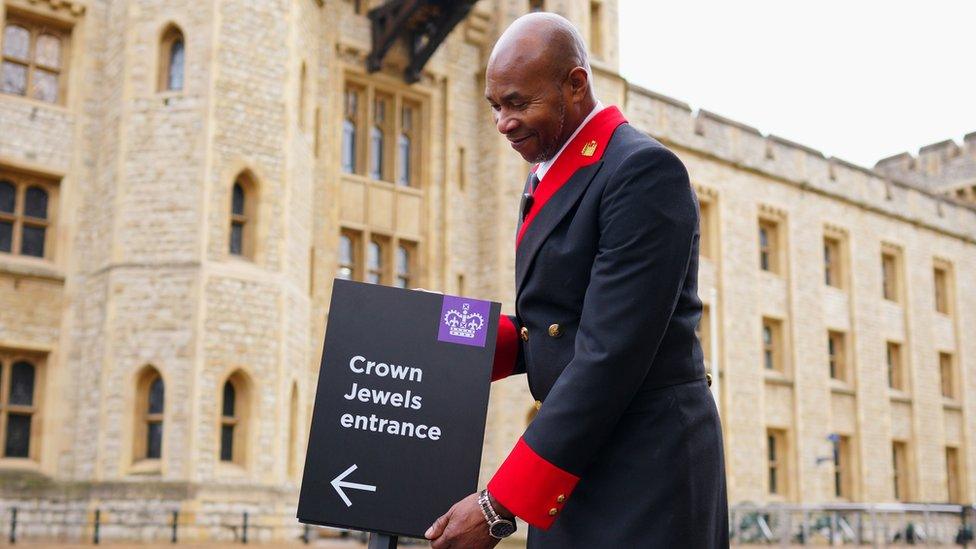
The new exhibition is the culmination of four years of work
'Symbols of the British monarchy'
Charles Farris, public historian for the history of the monarchy at Historic Royal Palaces, said that the Crown Jewels are "the most powerful symbols of the British monarchy" that hold "deep religious, historic, and cultural significance".
The re-presentation was prepared over the last four years by Historic Royal Palaces, the independent charity which cares for the historic tower.
The exhibition opens to visitors on 26 May.

Follow BBC London on Facebook, external, Twitter , externaland Instagram, external. Send your story ideas to hellobbclondon@bbc.co.uk, external
Related topics
- Published14 February 2023
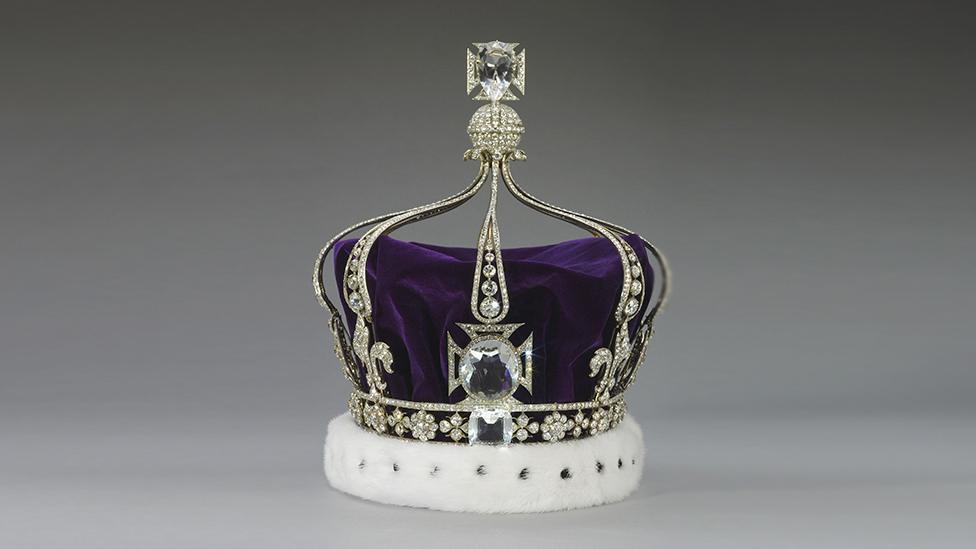
- Published9 December 2016
